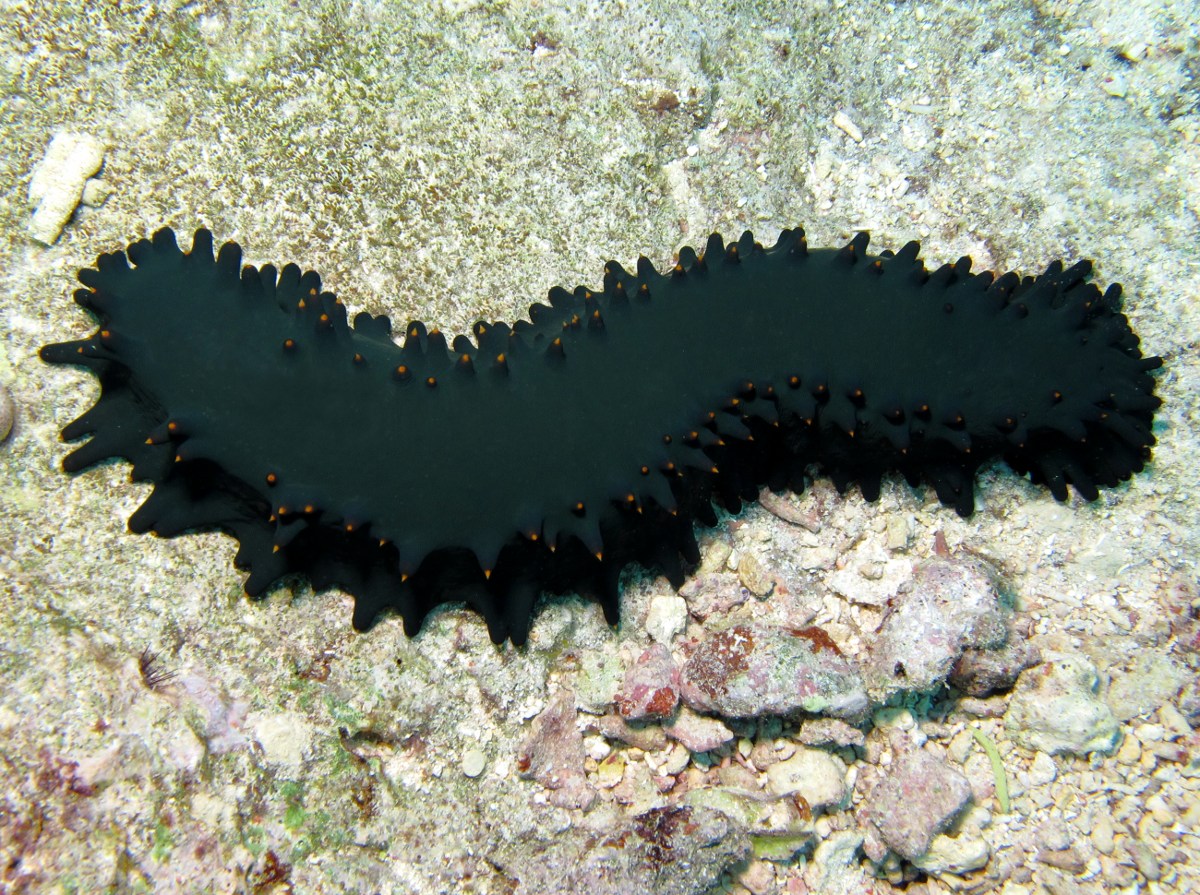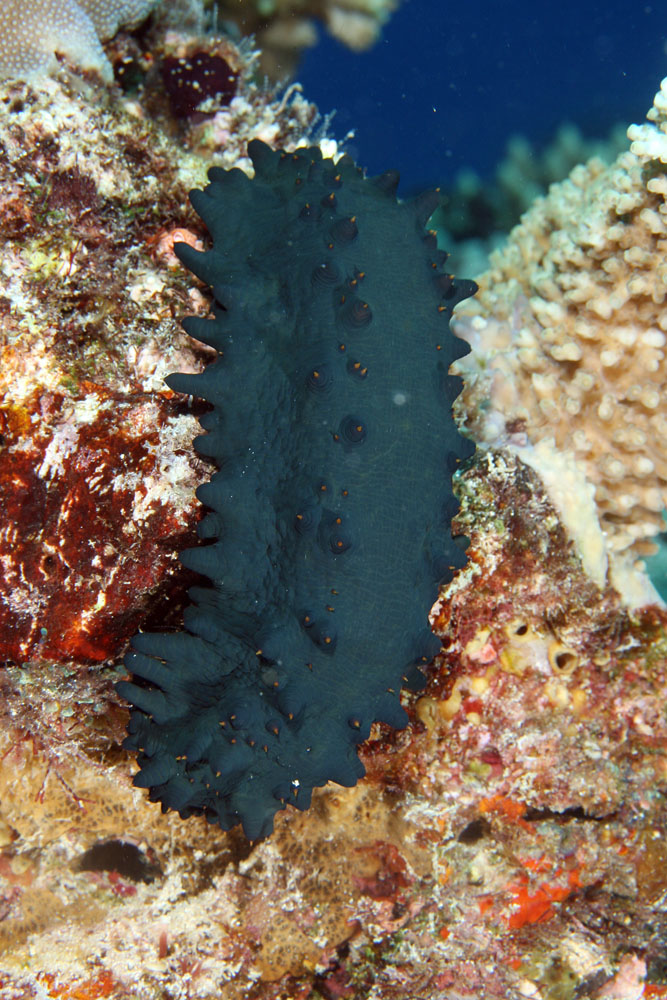Sea Cucumbers?
No, they're not an Underwater Vegetable.
 Welcome to a website dedicated solely to exploring the
species of Stichopus chloronotus. Stichopus chloronotus,
More commonly known as Greenfish is a type of echinoderm which belongs to
the class Holothuroidea, or more commonly known as the sea cucumbers. Sea
cucumbers are soft bodied marine animals shaped like a common-garden
cucumber. Despite this, the two are not related to one another. Sea
cucumbers are typically found in tropical areas throughout the world;
however, their whereabouts and dwellings are not limited to these specific
locations. Some species of sea cucumbers are even capable of living in areas
around Antarctica. In addition to this, sea cucumbers contain microscopic
skeletal ossicles that make up a latticed support structure referred to as an
endoskeleton. This unique feature of an endoskeleton is what classifies sea
-cucumbers under the phylum
Echinoderms, which means "spiny skinned".
Welcome to a website dedicated solely to exploring the
species of Stichopus chloronotus. Stichopus chloronotus,
More commonly known as Greenfish is a type of echinoderm which belongs to
the class Holothuroidea, or more commonly known as the sea cucumbers. Sea
cucumbers are soft bodied marine animals shaped like a common-garden
cucumber. Despite this, the two are not related to one another. Sea
cucumbers are typically found in tropical areas throughout the world;
however, their whereabouts and dwellings are not limited to these specific
locations. Some species of sea cucumbers are even capable of living in areas
around Antarctica. In addition to this, sea cucumbers contain microscopic
skeletal ossicles that make up a latticed support structure referred to as an
endoskeleton. This unique feature of an endoskeleton is what classifies sea
-cucumbers under the phylum
Echinoderms, which means "spiny skinned".
 Stichopus chloronotus is
usually found in the Indo-Pacific region of the world and lives mainly on and
around coral reefs. Although sea cucumbers have been found to be a
variety of colors, Stichopus
chloronotus usually varies from a dark green to black color with
rows of short orange or red tipped papillae along its sides. A large industry has been built around
Stichopus chloronotus and many other sea cucumbers, mainly in the
Indo-Pacific region, where they are used as food and for their medicinal
properties. All of the sea cucumbers in this industry are often referred to
as “Trepang” by the Chinese, or beche-de-mer in other areas.bÍche-de-mer
has been harvested for markets in the Indo-Pacific region for over a
thousand years. This strong demand for the echinoderm has led to many cases
of overfishing and has begun to worry many about the remaining populations. To learn more about beche-de-mer visit my web page on
interactions!
Stichopus chloronotus is
usually found in the Indo-Pacific region of the world and lives mainly on and
around coral reefs. Although sea cucumbers have been found to be a
variety of colors, Stichopus
chloronotus usually varies from a dark green to black color with
rows of short orange or red tipped papillae along its sides. A large industry has been built around
Stichopus chloronotus and many other sea cucumbers, mainly in the
Indo-Pacific region, where they are used as food and for their medicinal
properties. All of the sea cucumbers in this industry are often referred to
as “Trepang” by the Chinese, or beche-de-mer in other areas.bÍche-de-mer
has been harvested for markets in the Indo-Pacific region for over a
thousand years. This strong demand for the echinoderm has led to many cases
of overfishing and has begun to worry many about the remaining populations. To learn more about beche-de-mer visit my web page on
interactions!
To learn more about the classification of this species, click here!
Or, contact me here!
If you wish to learn more about other organsisms from Multiple Organisms click here!